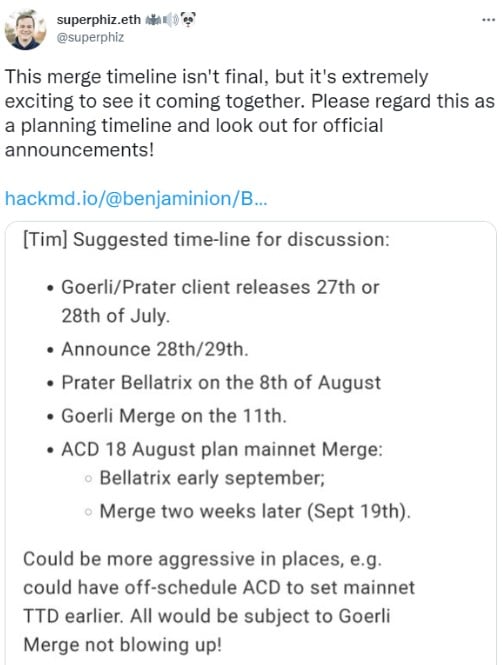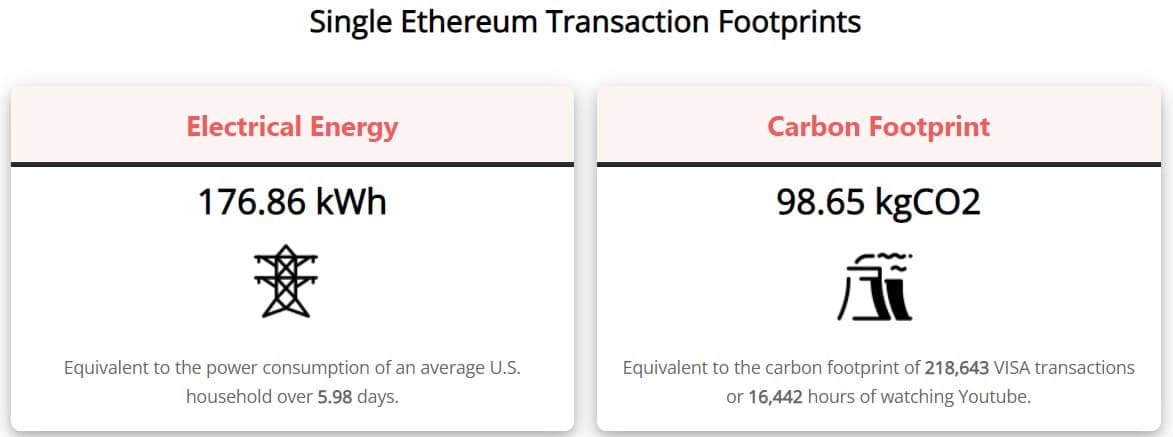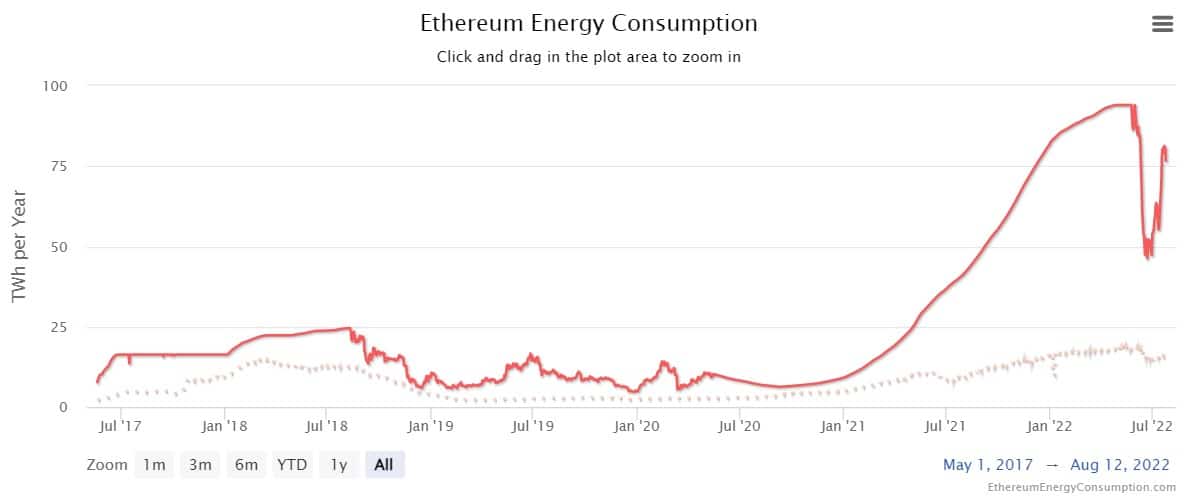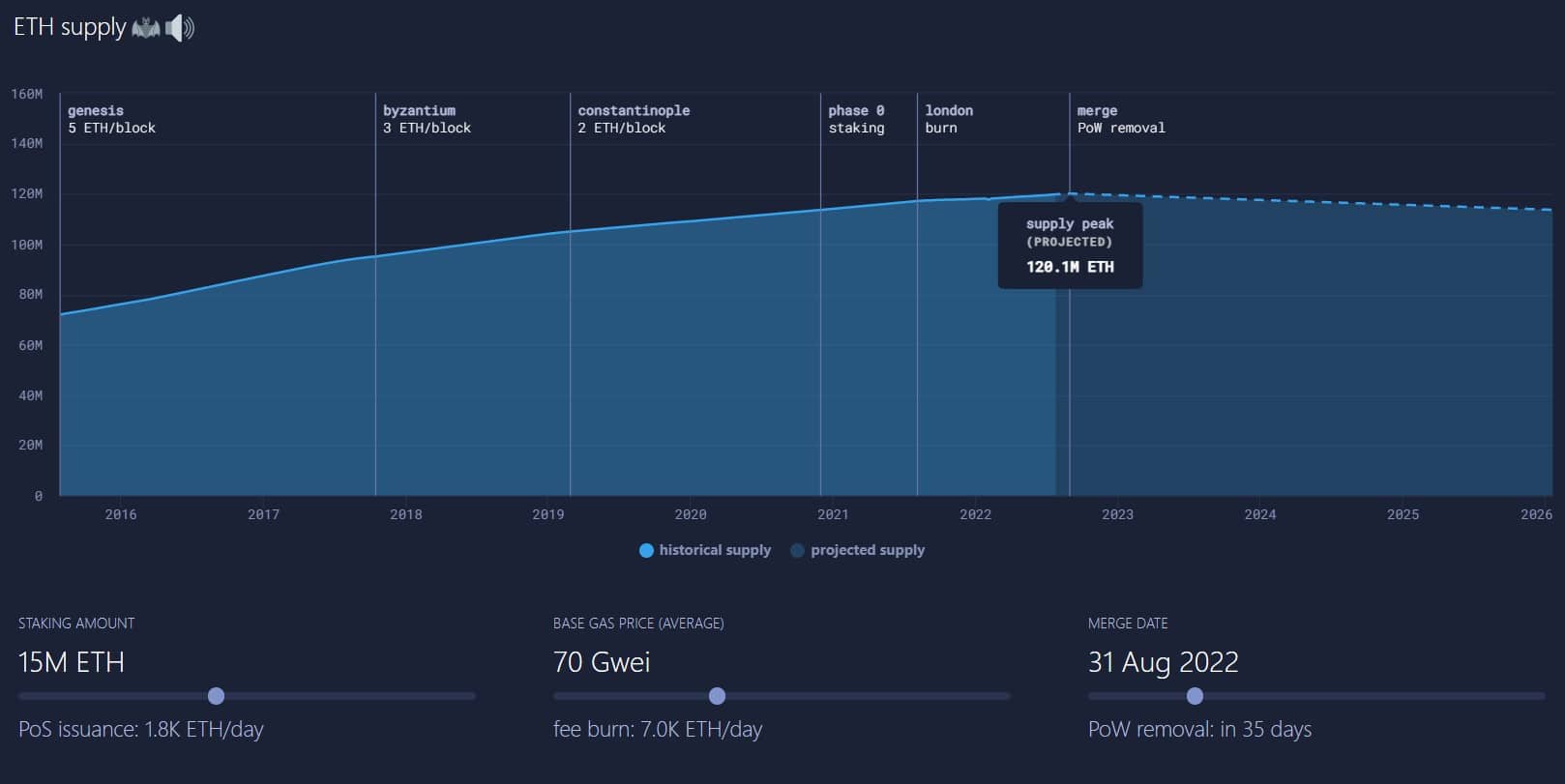Ethereum’s Merge is coming very soon, an update
Ethereum's Merge is coming soon! Here's an overview of what's been happening to Ethereum, and what to expect in the near future.


Update: As of Q3/Q4 2022, the term Ethereum 2.0 and Eth2 has been deprecated to prevent confusion in the community. Moving forward, the transition event for Ethereum will be known as The Merge.
Last week, we saw some excitement in the crypto space, especially around Ethereum’s upgrade to Ethereum 2.0 — or rather Ethereum’s merge to the Proof of Stake (PoS) consensus layer.
At the time of writing, the price of Ether (ETH) appeared to have broken through the 1,300 USD/ETH barrier. Before then, the price seemed ‘stuck’ underneath that level for more than a month.
Many investors still appear to have a bearish outlook on the market due to a tightening monetary policy of the US central bank. However, the jump in price of Ethereum surprised many people, who then wonder if the bear market for crypto is over.
Soft-deadline for the Merge
One factor that may contribute to the price increase was the release of a soft-deadline schedule for when the Merge will happen.
This is a breath of fresh air for the Ethereum community, due to the fact that previously, the deadline for the Merge was uncertain. The delay in Ethereum’s upgrade should not be seen as entirely bad news to the Ethereum community.

The schedule for Ethereum’s transition to Proof of Stake (PoS) had actually been hard-coded into the network protocol since 2015. Of course, plans are meant to change, and so the developers had to delay the Difficulty Bomb several times.
(Difficulty Bomb is the nickname for a piece of code that will exponentially increase the mining difficulty, which would force miners to switch over to PoS once it sets off).
What is Proof of Stake (PoS)? Read our guide.
Continued work on the Merge
With hundreds of billions of dollars of asset and business value on the line, Ethereum must transition to PoS successfully, and with a very small tolerance for error.
Luckily, despite the delays in Ethereum Merge, the developer community has been actively working on the transition. For example, last month, one major Ethereum test network Ropsten successfully transitioned to PoS with no repercussions.
This month, the Sepolia test network was upgraded with little error. Afterwards, we can expect the Goerli test network to transition as well.
Infrastructure and protocol for simulating merged Ethereum were introduced, for example, through shadow forks and hive tests.
In short, these run locally on developers’ own computers (and not on the Ethereum blockchain) for the purpose of stress-testing the Ethereum network node.
Any developer could run these tests, and collaborate with hundreds of other developers to verify and compare test results.
How will the Merge affect Ethereum?
You may hear the terms “the Merge” and “Ethereum 2.0” being thrown around in the past. You may wonder if Ethereum will upgrade to a new Ethereum 2.0 version.
Or perhaps, you’re confused about whether there is going to be another blockchain that the current Ethereum will merge into.
No more Ethereum 2.0, just Ethereum
Firstly, the Ethereum community has deprecated the term “Ethereum 2.0” or “Eth 2”. Although Ethereum will transition to a system that is more sustainable, it will not create (or fork) a completely new blockchain.
Secondly, running in parallel with Ethereum is the Beacon Chain, which is again not a completely different blockchain. Rather, the Beacon Chain is a consensus layer.
It’s a technology layer that makes Proof of Stake possible, in order for Ethereum to remain decentralised and secured against attackers.
What we see now as Ethereum is the blockchain layer that handles data and transactions, now still coupled with the Proof of Work mining mechanism, but will later be deprecated.

So, the Merge can be described as an event in which the Ethereum blockchain layer merges with the consensus layer to create an upgraded version of Ethereum.
Ethereum will reduce energy consumption by 99.95%
At the time of writing, Ethereum consumes about 176.86 kWh per block. Multiply this by about 6500 block creations, and the number quickly adds up.
If you’re interested in analysing the transparent statistics of Bitcoin and Ethereum energy consumptions, go check out Digiconomist.net.

Even if you argue that 50% of crypto mining energy is sourced from renewable generators, with the current energy consumption, Ethereum is not scalable.
On the other hand, the PoS consensus protocol doesn’t require Ethereum network nodes to use energy-intensive hardware (which is still being used today by Bitcoin).

Instead, each network node can stake (deposit) at least 32 ETH in order to participate as a validator node. Validators then get randomly chosen as a block producer — the more they stake, the more likely their chance of creating a new block and receiving block rewards.
In this model, validators compete with each other to stake the most ETH. Validators may attract ETH holders and stake on their behalf — a model known as delegated staking.
Arguably, the economic incentive and competition among validators remain similar to the old model where each miner competes by stacking up computational power with mining hardware.
The main difference is that with PoS, Ethereum will consume an estimate of only 0.01 TWh of energy per year.
Ether will be a deflationary asset
Ether is already poised as a deflationary asset since 2021. In other words, for each Ethereum transaction, a portion of the transaction fee is burned (removed from circulation).
However, with Proof of Work still in use at the time of writing, new Ether is still being produced via block reward to miners. That means before the Merge, ETH is now still very much an inflationary asset.
One thing to bear in mind is that Ether, even after the Merge, does not have a supply limit.
Before the Merge, the block reward gets reduced after a certain period of time, but this only slows down the inflation rate. In this model, the inflation rate of ETH could never reach zero.
After the Merge, more Ether will be burned than it will be produced via block reward from the PoS consensus layer. This means, the Ether supply will be reduced over time.
Theoretically speaking, the price of Ether can increase over time if the demand for Ether is unchanged.

Ether could be more attractive to institutional investors
Here’s the controversial part: Ether’s growth could possibly outpace Bitcoin in terms of market capitalisation. The market capitalisation is the “total dollar value” (or market share, to put it another way) of an asset.
This fact is not 100% certain, but there are arguments for why Ethereum could one day have a higher market capitalisation than Bitcoin:
- Ethereum’s PoS consensus layer is incredibly energy-efficient. This can attract institutional investors that must follow ESG requirements.
- Ethereum is still improving. The Merge allows Ethereum to scale in terms of energy usage. In the future, Ethereum will also scale using other technologies, such as sharding, to reduce network congestion and lower transaction costs.
- Ethereum has so many supporters. This isn’t just about the large developer community that works tirelessly to constantly improve Ethereum. Ethereum is also a base for such a large and highly diverse ecosystem of applications, games, and businesses.
- Ethereum is a first-mover. There are many so-called “Ethereum killer” blockchains that already have all the technologies that Ethereum promises to adopt in the future. Solana (SOL), Cardano (ADA), and many more blockchains are eager to take Ethereum’s place. However, Ethereum has already existed for a long time, with a longer blockchain. This makes Ethereum’s blockchain more secure.
Learn more: Read our guide on Ethereum 2.0.
Takeaways
Ethereum’s Merge will change the fundamentals of the second-most popular blockchain. While I can’t say for sure whether this would make Ethereum more valuable in the short run, there is definitely a lot of excitement for Ethereum’s long-term outlook as of now.
Do keep in mind that cryptocurrencies are volatile, and carry risk. Please do further research so that you are 100% sure about your financial decisions.
Share to
Stay curious and informed
Your info will be handled according to our Privacy Policy.
Make sure to follow our Twitter, Instagram, and YouTube channel to stay up-to-date with Easy Crypto!
Also, don’t forget to subscribe to our monthly newsletter to have the latest crypto insights, news, and updates delivered to our inbox.
Disclaimer: Information is current as at the date of publication. This is general information only and is not intended to be advice. Crypto is volatile, carries risk and the value can go up and down. Past performance is not an indicator of future returns. Please do your own research.
Last updated October 18, 2022





